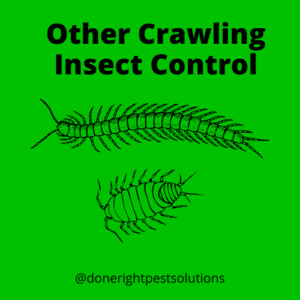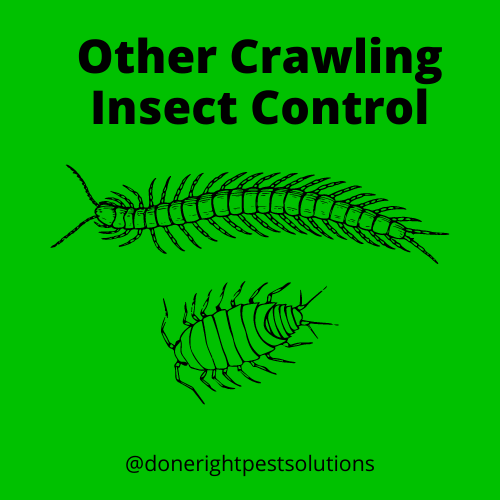Pill bugs, roly-polies, and woodlice are common insects (actually ground crustaceans) often spotted in gardens and damp areas around the home. While these small, harmless creatures play an essential role in breaking down organic material in the environment, they can become a nuisance if they find their way indoors.
In this article, we’ll explore the characteristics of these crawlers, their ecological benefits, and most importantly, how to prevent and control their presence in your home. Whether you’re looking to keep them outside or find the best pest control solutions, this article has you covered.
And if you are ever in immediate assistance, feel free to give us a call at 651-342-9489.
Table of Contents:
- Characteristics of Pill Bugs, Roly-Polies, and Woodlice
- The Role Pill Bugs, Roly-Polies, and Woodlice Play in the Environment
- How to Prevent Pill Bugs, Roly-Polies, and Woodlice Indoors
- Best Crawling Insect Pest Control for Pill Bugs, Roly-Polies, and Woodlice
- Conclusion & Next Steps

Characteristics of Pill Bugs, Roly-Polies, and Woodlice
Most folks know what pill bugs are, and while pill bugs and roly-polies are the same thing, there are some slight differences between pill bugs and woodlice.
Pill bugs, often called “roly-polies,” are small, terrestrial crustaceans that belong to the order Isopoda. Despite their bug-like appearance, they are more closely related to shrimp and lobsters than to insects. They have hard, segmented exoskeletons, and one of their most recognizable behaviors is rolling into a ball when threatened, which is a defense mechanism.
A woodlouse is a small, terrestrial crustacean from the order Isopoda, closely related to pill bugs (often confused with them). Like pill bugs, woodlice are more closely related to marine animals like shrimp and crabs than to insects.
Both pill bugs and woodlice have 7 pairs of legs, so they aren’t like centipedes or millipedes in that regard, but they certainly have more legs that insects or arachnids.
Insects strictly have 6 legs, arachnids have 8 legs, these isopoda have 14 legs, and centipedes and millipedes have hundreds of legs.
Here are a few key facts about pill bugs:
- Pill bugs typically measure about ¼ to ½ inch in length.
- They are usually dark gray or brown, and along with their 7 pairs of legs, they have 2 antennae.
- Pill bugs thrive in moist environments like under rocks, decaying wood, or leaf litter.
- They prefer areas with high humidity and are usually found outdoors, although they occasionally wander indoors.
- Pill bugs are decomposers, feeding on decaying organic matter, such as leaves and wood.
- While harmless to humans, pill bugs may become a nuisance if they enter homes in large numbers.
- They do not bite, sting, or transmit diseases.
As a result of their hard exoskeleton, their distinctive 7 pairs of legs, and their ability to roll into a ball, pill bugs are easily identifiable insects.
Pill bugs are so interesting, and Pest World For Kids has some fun facts about pill bugs too!
The Role Pill Bugs, Roly-Polies, and Woodlice Play in the Environment
Pill bugs, roly-polies, and woodlice are natural decomposers. They feed on decaying organic matter, plant matter (like leaves and wood). This makes them beneficial in recycling nutrients back into the soil.
In fact, while carpenter ants do not eat wood, even carpenter ants can be helpful in breaking down rotting wood in woods and forests.
It is not uncommon to turn over a large rock in the yard and see these pill bugs scatter. But did you know they are also nocturnal, like carpenter ants?
According to Pest World Magazine, “Pill bugs remain inactive under objects during the day in order to minimize water loss. They often stay under trash, boards, rocks, flower pots, piles of grass clippings, flowerbed mulches and other decaying vegetation. They tend to reside in these areas of high moisture because their bodily structures leave them vulnerable to water loss. Rollie pollies are most active at night. They occasionally enter buildings and homes via door thresholds.”
As you can see, pill bugs play an important role in the ecosystem by breaking down organic material, but if they become a problem indoors, controlling moisture and sealing entry points can help keep them out. These pests are often self-treatable, simply by preventing them and taking away their water sources. But more on that in the next section.
According to Pest World Magazine, “Pill bugs remain inactive under objects during the day in order to minimize water loss. They often stay under trash, boards, rocks, flower pots, piles of grass clippings, flowerbed mulches and other decaying vegetation. They tend to reside in these areas of high moisture because their bodily structures leave them vulnerable to water loss. Rollie pollies are most active at night. They occasionally enter buildings and homes via door thresholds.”
How to Prevent Pill Bugs, Roly-Polies, and Woodlice Indoors
Like millipedes, pill bugs, roly-polies, and woodlice love moisture-rich environments. They love to be under mulch and rock gardens around homes. They’ll feed on any decomposing plant matter around the home.
One of the best ways to prevent pill bugs from coming inside, is to keep the foundation around your home clean and clear of decomposing organic material.
Another way to know if pill bugs, roly-polies, and woodlice like your house, is to have some water issues around the foundation. Water issues can come by having broken or old gutters, having no downspouts where you need downspouts, or not having well-graded land around your home that may cause water to pool around the house.
One of the best ways to prevent water pooling and collecting near your home’s foundation, is to ensure the gutters and downspouts are in working order, and make sure the land around your home is flat or sloped downward to help with drainage.
Since pill bugs love moisture, if they get inside your basement, they’ll be looking for a food source and a water source.
A good way to prevent and pill bugs from making home in your basement is to make sure they have no food sources downstairs and to remove water. It is always a good idea to have a dehumidifier set up to extract water out of the air at a certain level to ensure mold and mildew doesn’t grow. This is a double-whammy with preventing pill bugs because it would take away their food and water source!
Best Crawling Insect Pest Control for Pill Bugs, Roly-Polies, and Woodlice
The best crawling insect pest control for pill bugs, roly-polies, and woodlice is simply prevention. As Benjamin Franklin once said, “An ounce of prevention is worth a pound of cure.”
But, occasionally these pests get out of hand. If you find yourself in a position where you are finding several dozen or more, you may need a professional pest control provider to come out and treat for these pests annually or just once.
Every home is different, and not everything is able to be fixed in a home right away. So if you are in need of a 1x crawling insect treatment, we are here for you! We have interior only services, we have interior and exterior services available.
Give us a call for a free consultation: 651-342-9489.



Pill bugs, roly-polies, and woodlice are common creepy crawlies. For additional tips and tricks regarding crawling insects, check out our category within our blog.
Conclusion & Next Steps
We hope you have learned a lot from this article. You learned about the characteristics of these very similar pests, the pill bug/roly-poly and the woodlouse. You learned about the role these pests play in the environment with breaking down organic and decomposing matter. Finally, you learned how to prevent pill bugs in your home and who to call if you’re having an infestation.
We hope you’ll think of us if you ever need anything. We really do strive to be your premier pest control industry, and are happy to serve the Minneapolis–St Paul metro area and beyond.
If you ever have any questions, feel free to reach out by email at donerightpestsolutions@gmail.com or by call or text to 651-342-9489.
We can’t wait to help you!
Done Right Team

